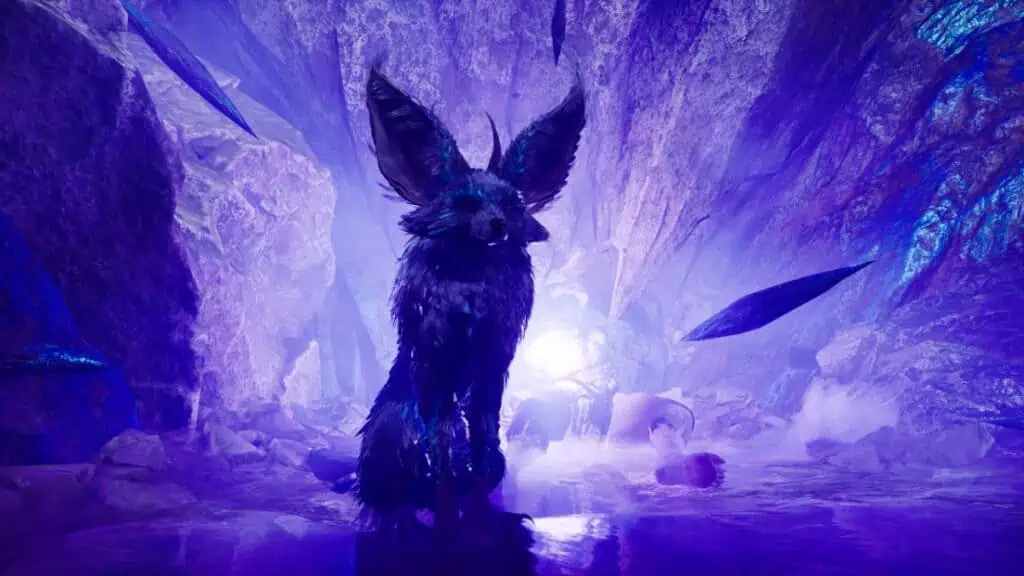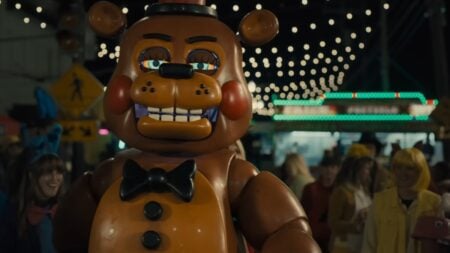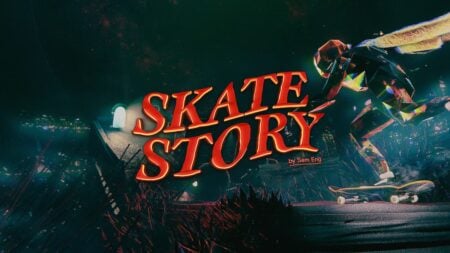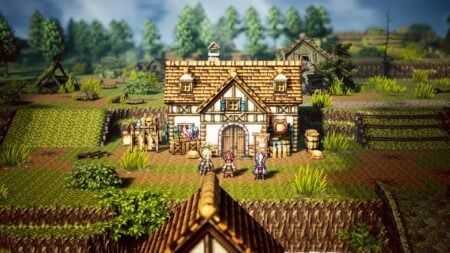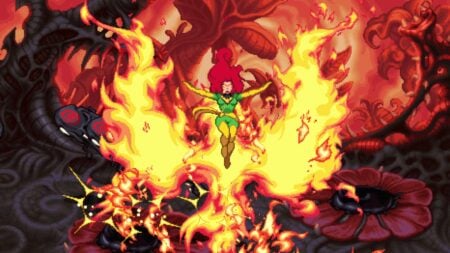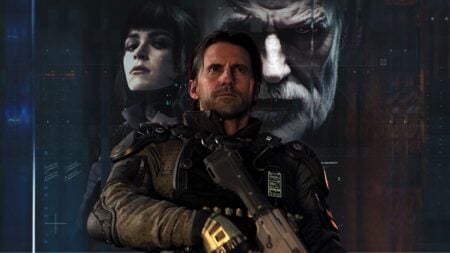Skip To...
Flintlock: The Siege of Dawn offers a Souls-lite adventure with systems and stories that feel achingly familiar. As you battle your way through the flintlock fantasy world of Kian, you’ll fight cruel foes, rest at checkpoints, and drop your money (Reputation) upon death. More akin to Lies of P than Elden Ring, it blends semi-linear exploration with combat, see-sawing between experimentation and boilerplate ideas. Explosive jumps, godly magic, and a coffee house fixation inject variety into the experience. Flintlock just feels too much like too many other games, struggling to find its own identity.
Flintlock: The Siege of Dawn Review
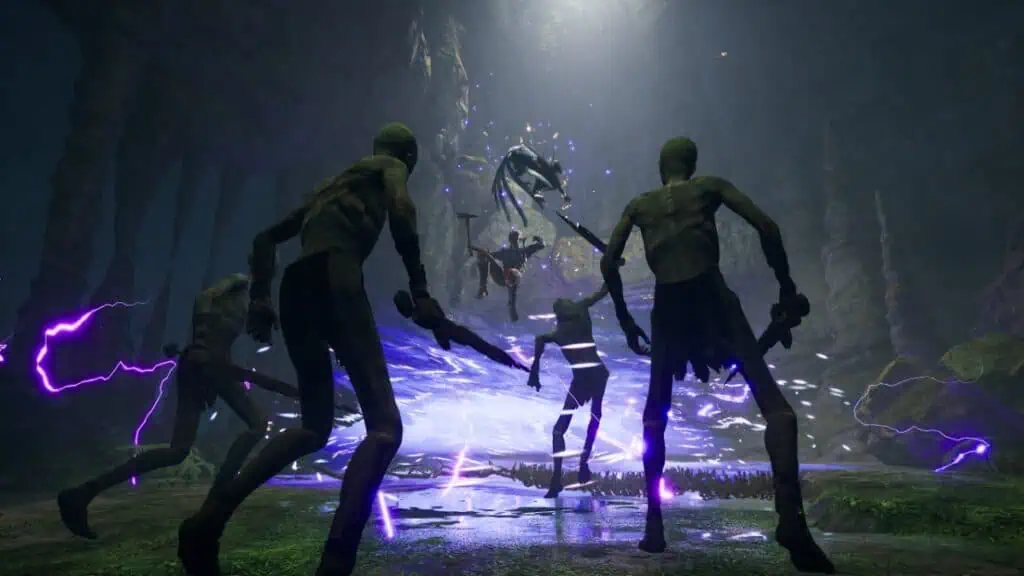
You’re Nor Vanek, a Sapper in the Coalition army, and you have a god on your side. Accompanied by the fox-like deity Enki on a quest for revenge against the other gods, you’ll fight your way through hamlets, mines, and castles, trusting your axe and flintlock weaponry to carry you through. Creative uses of gunpowder grant you a triple jump, turning every battle into a ballet of sulfuric explosions, rifle shots, and steely slashes. Flintlock explores some great ideas across its 20+ hour playtime, but inconsistent execution prevents these varied systems from congealing into a god-tier Souls-lite.
Story: Kian and the Coalition

Flintlock opens with Nor fighting her way through wartime trenches on assignment for the Coalition. It’s one of the game’s most tantalizing moments. Between the Napoleonic trappings, castle backdrop, and dark portal spitting monsters into Kian, there’s a great opportunity to take the story somewhere new. Yet the game simply…doesn’t. Instead, it treats us to a tale of angry entities escaping from the Great Below, the kind of thing we’ve seen in countless games. The gradual unraveling of the gods’ backstory adds some complexity, but Flintlock falls short of a rounded narrative.
Much of Flintlock’s lore would fit perfectly in Brian McClellan’s Powder Mage series, a comparison that exposes the game’s biggest weakness. Flintlock‘s worldbuilding rides in the ruts of similar stories while flirting with the Souls games’ approach to fragmented narratives. As a result, the tale feels more shallow than cryptic and mysterious. Not even interesting NPCs like Baz (a Coalition Sergeant and Nor’s adoptive father) can repair the damage. I don’t hate the story or its characters, but I struggle to engage with them. If they aren’t wooden, they’re waxen, and wax museums don’t thrill me.
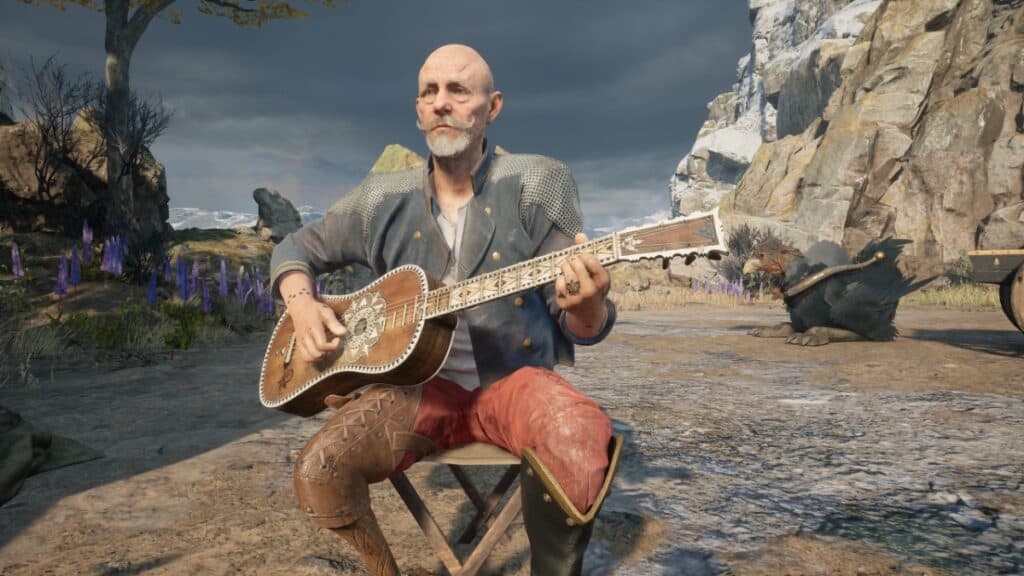
Consider the coffee houses. These shops / social hubs are Flintlock’s nod to the fantasy trope of taverns as the ultimate source of job leads and gossip. In The Siege of Dawn, they’re run by Hosts. These towering, multi-limbed beings cradle their own masked faces at all times, and they’re some of the most visually striking characters in the game. Yet their stories receive meager stage time. Flintlock’s a Souls-lite, not a 100-hour, narrative-driven RPG, so I didn’t expect 300 pages of Host backstory. That said, their lore feels underwhelming considering its importance to your adventure.
As you explore new areas, liberate hamlets, and upgrade your gear, you’ll expand your caravan. That means campfire chats with Baz and other allies, letting you learn more about the Coalition and Kian in the process. The dialog does the plot few favors, however, and big reveals rarely feel earned. The trouble with Kian is it looks but never feels lived in. The blend of Mesopotamian, Egyptian, Middle Eastern, and New Zealand influences combine into a solid art direction, but (despite the dev’s efforts) the story’s substance doesn’t shine through.
Gameplay: Blasting, No Cap

Flintlock’s combat, like its story, is a mixed bag of missed opportunities and genuine triumphs. Nor’s powder jumps are a fantastic idea, and they’re implemented well (for the most part). You can string three together before coming to earth, and they’ll break your fall from great heights. That lets you do your best Ezio impression off a tower without breaking your neck. In combat, these powder jumps let you fling yourself around the battlefield like a Coke bottle packed with Mentos. Flintlock gives you more battle mobility than pretty much anything in the genre, once you get the hang of it.
Nor wields a variety of axes and guns in addition to Enki’s Withering magic, letting you chain together swings and blunderbuss blasts. You can then close your combo with a storm of eldritch energy. This setup feeds Flintlock’s unique combo mechanic, rewarding you with Reputation for pulling off combos. The longer you go without getting hit, the more Reputation you stand to gain. Get hit before banking your accumulated Reputation, however, and the multiplier will reset. Powder jumps contribute to the multiplier, too, encouraging movement as well as aggression.
Enki plays an active role in battle, building a Curse meter with every attack upon your enemies. Fill it, and you’ll stagger your foe. That exposes them for a stylish hit that can strip shields or kill unshielded foes outright. Unlocking skills grants Enki additional abilities. Let the fox draw aggro, knock enemies over, or levitate them like clay pigeons. Enki works less like an Elden Ring summon and more like a unique weapon. It’s one of the game’s best mechanics, adding spice to every battle.

Outside of combat, Nor’s magical leaps feel lackluster. Powder jumps allow you to stall yourself in the air, regaining a little height while propelling yourself forward. Like Ori’s double-jump in Ori and the Blind Forest, this setup boosts your horizontal while doing little for your vertical. Though Flintlock’s interconnected areas are tuned for traversal, many jumps that look doable aren’t. You’re a stone skipping across water, not a rocket. Maybe it’s a me problem, a failure to accept the system as it is. All I know is Flintlock is the first game to make me feel like a triple-jump isn’t enough.
Enki also enables Rift Travel, an arcane leap that slingshots you from one predetermined launch point to another. It’s reminiscent of the spectral jump from Banishers: Ghosts of New Eden, but here it feels tacked on. Using Rift Travel to cross a bay and access distant rooftops? Makes sense. Using Rift Travel to traverse a short, safe corridor as an excuse to quip about it? It’s that one friend who insists their jokes are funny. Toss in some inexplicably slippery surfaces that prevent many sensible jumps, and traversal becomes both a guessing game and a chore.
Flintlock’s semi-linear areas allow for exploration, but it rarely feels worthwhile. There aren’t enough weapons, armor pieces, or other rewards. Instead, crafting ingredients are your main reason to step off the beaten path. Gathering wood and stone with which to improve your gear is fine, but it’s a poor incentive for exploration. It’s hard to care about exploration knowing I’ll likely find nothing more than sticks and stones. The Siege of Dawn is a beautiful game, but I wish I had better reasons to seek that beauty out.
Graphics & Audio: Flintlock Fascinations
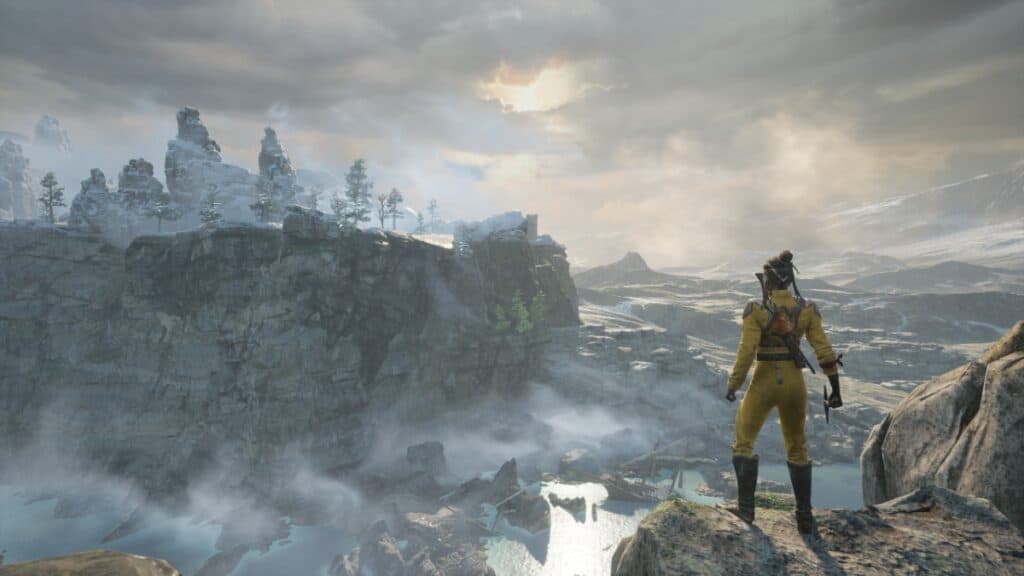
The knight hefts his shield as he advances, readying the steel slab to turn aside Nor’s axe. As Enki materializes beside him, the fox god staggers the armored man with ghostly blows. Seizing the moment, Nor dashes in, landing a trio of axe strikes before letting loose a pistol blast. Enki’s curses overwhelm the knight, and Nor rips away his shield before kicking him backward. With the knight now on his knees in the dust in front of her, Nor taps into Enki’s divine powers. She levitates as mystic lightning rips the battlefield apart.
Whether you’re framing the perfect portrait of Enki in photo mode or unloading your musket in battle, Flintlock: The Siege of Dawn looks great. The Napoleonic military uniforms worn by Nor and the rest of the Coalition catch your eye, even if you choose the Kill Bill yellow variation like I did. From particles to fog, Flintlock hits the mark. Its captivating environments, meanwhile, suffer from overfamiliarity: we’ve seen these caves, hamlets, and mountain roads before, and their dressings aren’t enough to distinguish them.
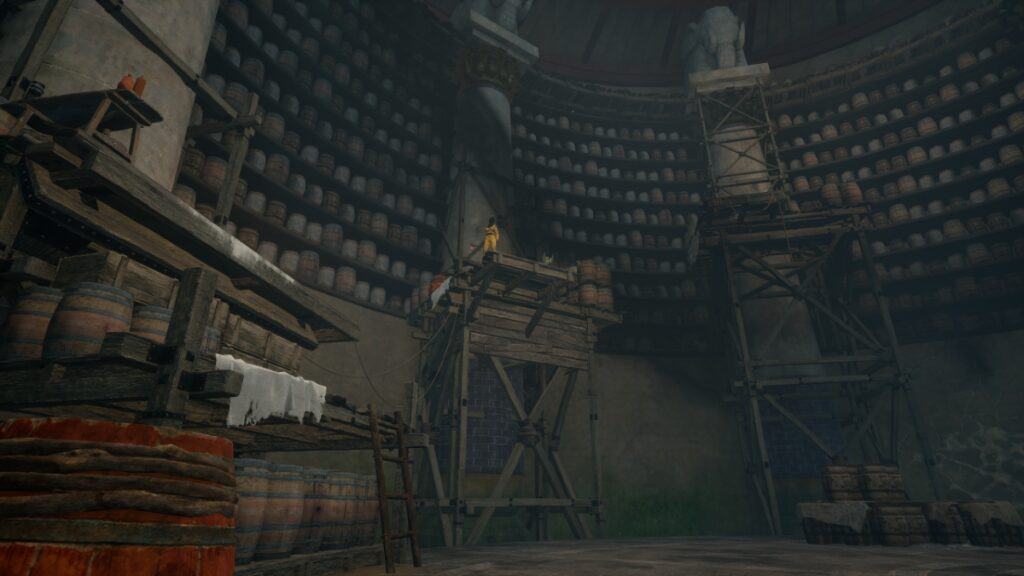
Landing a melee finisher or a musket snipe earns you a kill cam, slow-motion giving you a moment to appreciate your brutal handiwork before your foe’s corpse falls. These Sniper Elite moments feel great every single time, even when I’m just clearing the road of those devil dodos that seem to haunt my every step in Flintlock. Though some animations fail to sell Nor’s axe impacts the way I’d like, The Siege of Dawn looks and feels great most of the time. The game’s music and SFX do a lot of heavy lifting, especially when you begin to unlock more of Enki’s screen-clearing Witherings.
Olive Gray (Nor) and Alistair Petrie (Enki) are talented voice actors, but they’re unfortunately let down by cardboard fantasy dialog. Listening to Nor try to inspire her fellow Coalition soldiers can be cringe-inducing. Part of the problem lies with the game’s direction during cutscenes and conversations. Neither the camera nor the models’ movements are dynamic enough to convey much life or drama. The modeling itself is excellent, and beautiful set-pieces such as a blackpowder mine (stacked wall-to-wall with explosive barrels) still evoke oohs and ahhs, but it’s not enough.
Conclusion: New, Old, and New Again

I experienced a handful of glitches during my time with Flintlock: The Siege of Dawn, mostly related to animations, but no crashes. A44 includes some fantastic talent, and the weaknesses of Flintlock don’t negate that. It’s not a life-changing game, but it’s a solid Souls-lite with some clever ideas. If you’re a fan of the genre, and you’re sick of fat-rolling away from dragon’s fire, Flintlock’s gunpowder antics are well worth a playthrough. Although parts of Nor and Enki’s story disappointed me, I’d welcome a Siege of Dusk someday. It’s a tale deserving of a second telling, stammers and all.
Flintlock: The Siege of Dawn (PC Reviewed)
A Souls-lite with Napoleonic flair and explosive movement that delivers too much of the familiar to carve a niche of its own.
Pros
- Movement, magic, and kill-cams keep combat spicy
- Eye-catching set-pieces and character designs
- Enki
Cons
- Bland storytelling
- Jump distance and collisions often disappoint
- Underwhelming exploration

